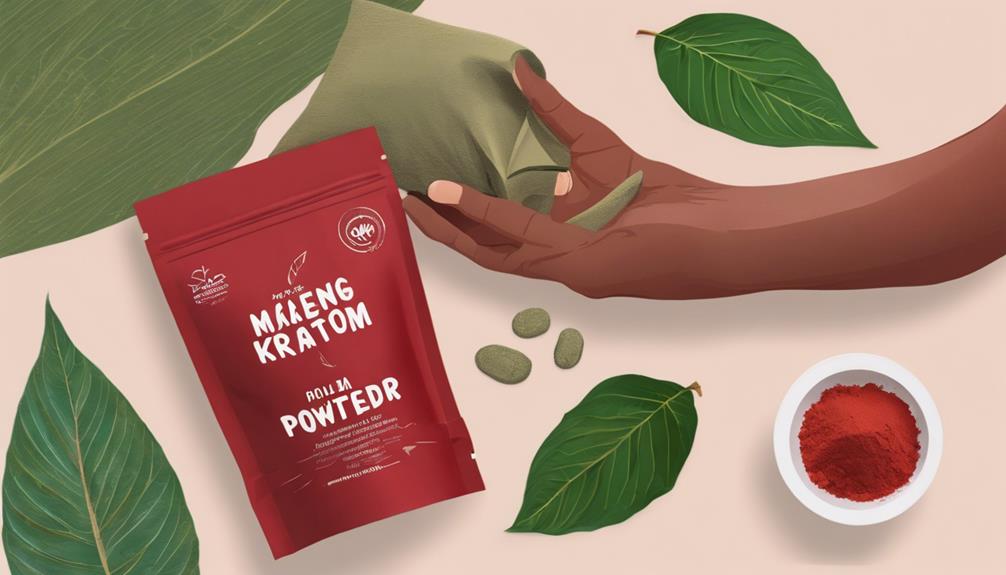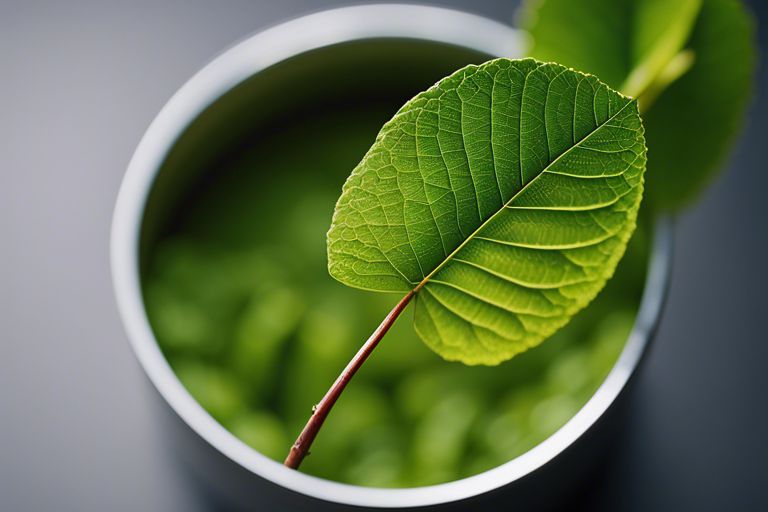Deprecated: mb_convert_encoding(): Handling HTML entities via mbstring is deprecated; use htmlspecialchars, htmlentities, or mb_encode_numericentity/mb_decode_numericentity instead in /home/users/kratomfiles/www/kratomfiles.com/wp-content/plugins/quick-adsense-reloaded/includes/template-functions.php on line 3552
Kratom tea is a traditional beverage originating from Southeast Asia that has recently gained attention in Western countries due to its potential health effects. The tea is prepared using leaves from the kratom tree (Mitragyna speciosa), which is indigenous to Thailand, Malaysia, and Indonesia. Kratom leaves contain alkaloids, primarily mitragynine and 7-hydroxymitragynine, which are believed to interact with the human body in various ways.
Some individuals use kratom tea as an alternative remedy for chronic pain, anxiety, and depression. It has also been utilized as a potential substitute for opioids or to alleviate opioid withdrawal symptoms. The tea is typically prepared by steeping kratom powder in hot water and can be consumed either hot or cold.
While kratom tea is legal in many countries, its use remains controversial due to ongoing debates about its safety and potential for misuse. As with any herbal product, it is crucial to understand the possible risks and benefits of kratom tea before incorporating it into one’s wellness regimen. Kratom tea has a distinctive earthy taste and aroma that may not appeal to all consumers.
However, various techniques and ingredients can be employed to enhance its flavor. This article will explore different aspects of kratom tea preparation, including selecting appropriate kratom powder, brewing methods, flavor enhancements, dosage guidelines, and potential benefits and risks. This comprehensive guide aims to provide valuable information for both newcomers and experienced kratom tea consumers.
Key Takeaways
- Kratom tea is a popular way to consume kratom, a tropical tree native to Southeast Asia, known for its stimulating and pain-relieving effects.
- When choosing the right kratom powder for tea, consider the strain, potency, and desired effects, such as energy or relaxation.
- Brewing the perfect kratom tea involves simmering the powder in water for 15-20 minutes, then straining and flavoring as desired.
- Enhance the flavor of kratom tea with ingredients like honey, lemon, or ginger to mask the bitter taste of the kratom powder.
- When consuming kratom tea, start with a low dosage and gradually increase as needed, while being mindful of potential benefits and risks such as improved mood and addiction.
Choosing the Right Kratom Powder
Choosing the Right Kratom Powder
When it comes to making kratom tea, the first step is to choose the right kratom powder. There are various strains of kratom available, each with its own unique properties and effects. The three main types of kratom strains are red vein, green vein, and white vein.
Understanding Kratom Strains
Red vein kratom is known for its relaxing and sedating effects, making it ideal for managing pain and promoting sleep. Green vein kratom is considered to have a balanced combination of relaxation and stimulation, making it suitable for daytime use. White vein kratom is known for its energizing and mood-enhancing effects, making it a popular choice for boosting focus and productivity.
Selecting the Right Strain for Your Needs
When selecting kratom powder for your tea, it is essential to consider your individual needs and preferences. If you are looking for a calming and soothing experience, you may opt for a red vein strain. On the other hand, if you want a more uplifting and energizing effect, a white or green vein strain may be more suitable.
Ensuring Quality and Purity
Additionally, it is important to purchase high-quality kratom powder from reputable sources to ensure purity and potency. Look for vendors who provide detailed information about their products, including the strain, origin, and alkaloid content. By choosing the right kratom powder, you can tailor your tea to achieve the desired effects and enhance your overall well-being.
Brewing the Perfect Kratom Tea
Brewing kratom tea is a simple process that involves steeping kratom powder in hot water. However, there are various techniques and methods that can be used to achieve the perfect brew. To start, measure out the desired amount of kratom powder using a scale or measuring spoon.
The typical dosage for kratom tea ranges from 2 to 4 grams, but individual tolerance levels may vary. Next, bring water to a boil in a pot or kettle. Once the water reaches a rolling boil, reduce the heat and add the measured kratom powder to the water.
Allow the kratom powder to simmer in the water for 10 to 15 minutes, stirring occasionally to ensure that it is fully dissolved. After simmering, remove the pot from the heat and let the tea steep for an additional 5 minutes. This allows the alkaloids in the kratom powder to fully infuse into the water, maximizing the potency of the tea.
Once steeped, strain the tea through a fine mesh strainer or cheesecloth to remove any remaining plant material. The resulting liquid is your brewed kratom tea, which can be consumed hot or cold depending on your preference. Another popular method for brewing kratom tea is using a French press.
This technique involves adding kratom powder to a French press and pouring hot water over it. Allow the mixture to steep for several minutes before pressing down the plunger to separate the liquid from the plant material. This method provides a convenient way to brew individual servings of kratom tea without the need for additional straining.
Experimenting with different brewing methods and steeping times can help you find the perfect balance of flavor and potency for your kratom tea.
Enhancing the Flavor of Kratom Tea
| Flavor Enhancing Method | Effectiveness |
|---|---|
| Adding Citrus Juice | Effective in masking the bitterness |
| Using Sweeteners (Honey, Sugar, etc.) | Can help to sweeten the taste |
| Mixing with Herbal Teas | Can add pleasant flavors and aromas |
| Adding Spices (Cinnamon, Ginger, etc.) | Can add depth and warmth to the flavor |
Kratom tea has a distinct earthy flavor that may not be appealing to everyone. Fortunately, there are several ways to enhance the taste of kratom tea and make it more enjoyable to consume. One popular method for improving the flavor of kratom tea is by adding natural sweeteners such as honey or agave nectar.
These sweeteners can help mask the bitterness of the kratom powder while adding a touch of sweetness to the tea. Additionally, you can experiment with adding citrus juices such as lemon or lime to brighten the flavor of the tea. Another way to enhance the flavor of kratom tea is by incorporating herbal teas or flavorings.
Adding ingredients like ginger, cinnamon, or peppermint can impart a pleasant aroma and taste to your kratom tea. These herbal additions not only improve the overall flavor profile but also provide additional health benefits and digestive support. Furthermore, you can customize your kratom tea by blending it with other herbal teas such as chamomile or lavender for a soothing and aromatic experience.
For those who prefer a creamy texture in their tea, adding a splash of coconut milk or almond milk can create a rich and indulgent beverage. The creamy consistency helps mellow out the bitterness of the kratom powder while adding a subtle nutty flavor to the tea. Additionally, you can experiment with adding spices like turmeric or cardamom for an exotic twist on your kratom tea.
By exploring different flavor-enhancing ingredients and combinations, you can create a personalized kratom tea that suits your taste preferences and provides an enjoyable drinking experience.
Dosage and Consumption of Kratom Tea
Determining the appropriate dosage of kratom tea is crucial for achieving the desired effects while minimizing potential side effects. The ideal dosage varies depending on individual factors such as body weight, tolerance level, and sensitivity to alkaloids. It is recommended to start with a low dosage of 2 grams and gradually increase as needed based on your response to the tea.
It is important to note that consuming too much kratom can lead to adverse effects such as nausea, dizziness, or sedation. To ensure accurate dosing, it is advisable to use a digital scale to measure out the precise amount of kratom powder for brewing your tea. This allows you to control the potency of your tea and avoid consuming excessive amounts of alkaloids.
Additionally, keeping track of your dosage and its effects can help you find the optimal amount that works best for your individual needs. When consuming kratom tea, it is important to be mindful of its potential interactions with other substances such as medications or alcohol. Avoid combining kratom with central nervous system depressants or stimulants as this can increase the risk of adverse reactions.
Furthermore, it is advisable to refrain from driving or operating heavy machinery after consuming kratom tea due to its potential sedative effects.
Potential Benefits and Risks of Kratom Tea

Pain Management and Analgesic Effects
The alkaloids present in kratom leaves are believed to interact with opioid receptors in the brain, leading to analgesic effects similar to opioids but without causing respiratory depression. This makes kratom an attractive alternative for individuals seeking non-pharmaceutical options for chronic pain relief.
Mood Enhancement and Energy Boost
In addition to pain management, some users report experiencing improved mood, reduced anxiety, and increased energy levels after consuming kratom tea. These effects are attributed to the stimulating properties of certain kratom strains such as white vein varieties. Furthermore, some individuals use kratom tea as a tool for managing opioid withdrawal symptoms due to its potential to alleviate cravings and withdrawal discomfort.
Risks and Precautions
Despite its potential benefits, it is important to acknowledge that there are risks associated with consuming kratom tea. The U.S. Food and Drug Administration (FDA) has raised concerns about the safety of kratom due to reports of adverse effects such as liver damage, seizures, and even death associated with its use. Additionally, prolonged use of high doses of kratom may lead to dependence and withdrawal symptoms similar to those experienced with opioid use. It is crucial to approach kratom tea with caution and be aware of its potential risks before incorporating it into your wellness routine. Consulting with a healthcare professional can provide valuable insights into how kratom may interact with your individual health conditions or medications.
Conclusion and Final Tips for Making Kratom Tea
In conclusion, kratom tea offers a unique way to experience the potential benefits of this traditional herbal remedy while enjoying a soothing beverage. By choosing high-quality kratom powder from reputable sources and experimenting with different brewing techniques and flavor enhancements, you can create a personalized cup of kratom tea that suits your preferences. When consuming kratom tea, it is important to start with a low dosage and monitor your response before adjusting your intake.
Being mindful of potential interactions with other substances and understanding both the benefits and risks associated with kratom tea are essential for making informed decisions about its use. Incorporating these final tips into your kratom tea-making routine can help you maximize its potential benefits while minimizing potential risks: 1. Choose high-quality kratom powder from reputable sources.
2.
Experiment with different brewing methods and flavor enhancements.
3. Start with a low dosage and gradually adjust based on your response.
4. Be mindful of potential interactions with medications or other substances.
5.
Understand both the potential benefits and risks associated with consuming kratom tea.
6. Consult with a healthcare professional if you have any underlying health conditions or concerns about using kratom. By following these guidelines and being informed about the various aspects of making and consuming kratom tea, you can enjoy this traditional beverage while prioritizing your well-being and safety.
If you’re interested in learning more about the effects of kratom, you should check out this article on kava and kratom effects. It provides valuable information on the potential interactions between these two substances and how they can affect your body. Understanding the effects of kratom and kava can help you make informed decisions about incorporating them into your wellness routine.
FAQs
What is kratom tea?
Kratom tea is a traditional Southeast Asian beverage made from the leaves of the kratom tree. It is known for its stimulating and relaxing effects.
How do you make kratom tea with powder?
To make kratom tea with powder, you will need to boil water and add the desired amount of kratom powder. Let it simmer for 10-15 minutes, then strain the liquid to remove the powder. You can add sweeteners or flavorings to taste.
What are the benefits of drinking kratom tea?
Drinking kratom tea may provide pain relief, relaxation, and a boost in energy. It is also believed to help with anxiety and depression.
Is kratom tea legal?
The legal status of kratom varies by country and region. In some places, it is legal and regulated, while in others it is banned. It is important to check the laws in your area before making or consuming kratom tea.
What are the potential side effects of kratom tea?
Some potential side effects of kratom tea include nausea, constipation, and dizziness. It can also be addictive and may cause withdrawal symptoms. It is important to use kratom responsibly and in moderation.










